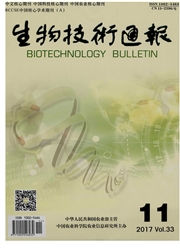

 中文摘要:
中文摘要:
Irisin是FNDC5(Ⅲ型纤连蛋白域包含蛋白5)经蛋白水解酶水解后分泌的水溶性多肽片段,又称肌因子,可促进脂肪棕色化,与血糖代谢密切相关.重点研究了人类Irisin的起始翻译位点,探讨了Irisin前体FNDC5蛋白(可以形成Irisin的FNDC5)的起始翻译机制.运用进化分析和序列模体识别方法研究了人类FNDC5同源性最高的前20个序列,以确定人Irisin前体的起始翻译位点;采取GO富集、发夹结构与上下文环境分析归纳non-ATG翻译起始密码子的序列及功能的共性,同时解析ATA翻译起始密码子的特性.结果发现:与其他物种FNDC5多序列比对,人Irisin前体FNDC5以ATA为起始密码子;人类全基因组non-ATG起始翻译的上下文偏好-3位嘌呤(A/G)、+4位鸟嘌呤(C)以及特殊位置的发夹结构;不同的起始密码子具有不同的上下文偏好;人类全基因组中non-ATG蛋白富集于代谢过程、生物调节、核苷酸转录因子和连接等功能,多是调节性蛋白.研究结果表明,人体Irisin的前体FNDC5起始翻译具有ATA起始密码子潜在的最优上下文环境,可能存在独特的non-ATG起始翻译机制,且人体non-ATG起始翻译的蛋白可能在人体代谢调控中发挥重要的作用.
 英文摘要:
英文摘要:
Irisin, identified water soluble polypeptide fragments, also called muscle factor, has been shown to be secreted from fibronectin type III domain containing protein 5 (FNDC5) of skeletal muscle by an unknown protease, promotes the white adipose tissue convert to brown adipose tissue, closely associated with diabetes. In this paper we investigated the initiated translation mechanism of human Irisin precursor proteins FNDC5. In order to determine the initiated translation site of human Irisin precursor FNDC5, we investigated the Top 20 FNDC5 homologous sequences by evolutionary analysis and motif identification. Then, we analyzed the sequence and function of the non-ATG translation initiation in common by GO enrichment, hairpin structure and context analysis, which explained the features of ATA translation initiation. The results showed that: Compared with other species, the initiator codon of human Irisin precursor proteins FNDC5 is ATA. Human genome non-ATG-initiated translation has context preference that the purine -3 position (A/G) and guanidine +4 (C) position and special location of the hairpin structure. However, the context of the different initiation codon have different preferences. The function of human genome-wide non-ATG protein focus on metabolic process, biological regulation, nucleotide transcription factors, linking, etc, which are regulatory proteins. Results indicated that, human Irisin precursor proteins FNDC5 initiated translation have potential optimal ATA context, which might be a unique non-ATG initiated translation mechanism. Proteins, non-ATG initial translation in human, which may play an important role in the regulation of human metabolization.
 同期刊论文项目
同期刊论文项目
 同项目期刊论文
同项目期刊论文
 期刊信息
期刊信息
